Xue Li
School of Information Technology and Electronic Engineering, The University of Queensland
Efficient Vision-Language Reasoning via Adaptive Token Pruning
Dec 14, 2025Abstract:Real-world deployment of Vision-Language Models (VLMs) is hindered by high computational demands, as existing architectures inefficiently process all tokens uniformly. We introduce Adaptive Token Pruning (ATP), a dynamic inference mechanism that retains only the most informative tokens based on contextual relevance. ATP operates at the vision-language interface, assigning a hybrid importance score combining ViT CLS attention (intra-modal saliency) and CLIP text-image similarity (inter-modal relevance) to keep top-K tokens for the LLM. Unlike static compression, ATP adapts to each input without modifying the backbone. Proposed as a lightweight gating module, ATP is compatible with popular backbones like BLIP-2, LLaVA, and Flamingo. Preliminary evaluations across VQAv2, GQA, and COCO indicate that ATP reduces inference FLOPs by around 40% and achieves roughly 1.5x speedups in end-to-end latency with negligible accuracy loss (less than 1%). Qualitative analyses suggest ATP preserves visual grounding and enhances interpretability. Beyond efficiency, we investigate robustness under corruptions; observations suggest adaptive pruning suppresses spurious correlations, improving stability. These findings imply that resource-constrained inference and model reliability are not competing objectives. Finally, we discuss ATP's role in efficient multimodal edge computing pipelines.
ReaKase-8B: Legal Case Retrieval via Knowledge and Reasoning Representations with LLMs
Oct 30, 2025Abstract:Legal case retrieval (LCR) is a cornerstone of real-world legal decision making, as it enables practitioners to identify precedents for a given query case. Existing approaches mainly rely on traditional lexical models and pretrained language models to encode the texts of legal cases. Yet there are rich information in the relations among different legal entities as well as the crucial reasoning process that uncovers how legal facts and legal issues can lead to judicial decisions. Such relational reasoning process reflects the distinctive characteristics of each case that can distinguish one from another, mirroring the real-world judicial process. Naturally, incorporating such information into the precise case embedding could further enhance the accuracy of case retrieval. In this paper, a novel ReaKase-8B framework is proposed to leverage extracted legal facts, legal issues, legal relation triplets and legal reasoning for effective legal case retrieval. ReaKase-8B designs an in-context legal case representation learning paradigm with a fine-tuned large language model. Extensive experiments on two benchmark datasets from COLIEE 2022 and COLIEE 2023 demonstrate that our knowledge and reasoning augmented embeddings substantially improve retrieval performance over baseline models, highlighting the potential of integrating legal reasoning into legal case retrieval systems. The code has been released on https://github.com/yanran-tang/ReaKase-8B.
Attributed Graph Clustering with Multi-Scale Weight-Based Pairwise Coarsening and Contrastive Learning
Jul 28, 2025Abstract:This study introduces the Multi-Scale Weight-Based Pairwise Coarsening and Contrastive Learning (MPCCL) model, a novel approach for attributed graph clustering that effectively bridges critical gaps in existing methods, including long-range dependency, feature collapse, and information loss. Traditional methods often struggle to capture high-order graph features due to their reliance on low-order attribute information, while contrastive learning techniques face limitations in feature diversity by overemphasizing local neighborhood structures. Similarly, conventional graph coarsening methods, though reducing graph scale, frequently lose fine-grained structural details. MPCCL addresses these challenges through an innovative multi-scale coarsening strategy, which progressively condenses the graph while prioritizing the merging of key edges based on global node similarity to preserve essential structural information. It further introduces a one-to-many contrastive learning paradigm, integrating node embeddings with augmented graph views and cluster centroids to enhance feature diversity, while mitigating feature masking issues caused by the accumulation of high-frequency node weights during multi-scale coarsening. By incorporating a graph reconstruction loss and KL divergence into its self-supervised learning framework, MPCCL ensures cross-scale consistency of node representations. Experimental evaluations reveal that MPCCL achieves a significant improvement in clustering performance, including a remarkable 15.24% increase in NMI on the ACM dataset and notable robust gains on smaller-scale datasets such as Citeseer, Cora and DBLP.
* The source code for this study is available at https://github.com/YF-W/MPCCL
SAGE: A Visual Language Model for Anomaly Detection via Fact Enhancement and Entropy-aware Alignment
Jul 10, 2025Abstract:While Vision-Language Models (VLMs) have shown promising progress in general multimodal tasks, they often struggle in industrial anomaly detection and reasoning, particularly in delivering interpretable explanations and generalizing to unseen categories. This limitation stems from the inherently domain-specific nature of anomaly detection, which hinders the applicability of existing VLMs in industrial scenarios that require precise, structured, and context-aware analysis. To address these challenges, we propose SAGE, a VLM-based framework that enhances anomaly reasoning through Self-Guided Fact Enhancement (SFE) and Entropy-aware Direct Preference Optimization (E-DPO). SFE integrates domain-specific knowledge into visual reasoning via fact extraction and fusion, while E-DPO aligns model outputs with expert preferences using entropy-aware optimization. Additionally, we introduce AD-PL, a preference-optimized dataset tailored for industrial anomaly reasoning, consisting of 28,415 question-answering instances with expert-ranked responses. To evaluate anomaly reasoning models, we develop Multiscale Logical Evaluation (MLE), a quantitative framework analyzing model logic and consistency. SAGE demonstrates superior performance on industrial anomaly datasets under zero-shot and one-shot settings. The code, model and dataset are available at https://github.com/amoreZgx1n/SAGE.
FlashForge: Ultra-Efficient Prefix-Aware Attention for LLM Decoding
May 23, 2025

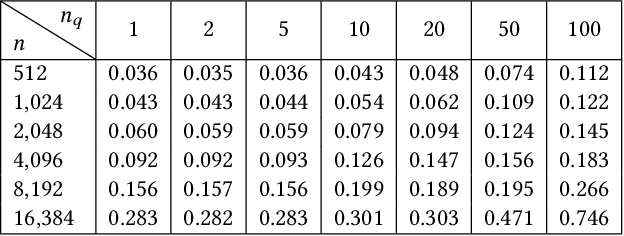
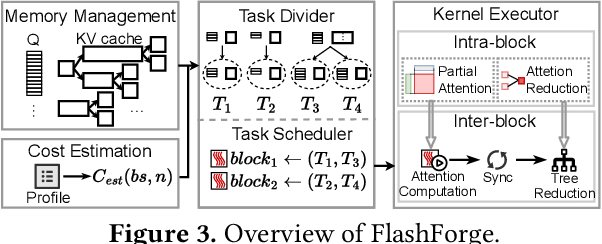
Abstract:Prefix-sharing among multiple prompts presents opportunities to combine the operations of the shared prefix, while attention computation in the decode stage, which becomes a critical bottleneck with increasing context lengths, is a memory-intensive process requiring heavy memory access on the key-value (KV) cache of the prefixes. Therefore, in this paper, we explore the potential of prefix-sharing in the attention computation of the decode stage. However, the tree structure of the prefix-sharing mechanism presents significant challenges for attention computation in efficiently processing shared KV cache access patterns while managing complex dependencies and balancing irregular workloads. To address the above challenges, we propose a dedicated attention kernel to combine the memory access of shared prefixes in the decoding stage, namely FlashForge. FlashForge delivers two key innovations: a novel shared-prefix attention kernel that optimizes memory hierarchy and exploits both intra-block and inter-block parallelism, and a comprehensive workload balancing mechanism that efficiently estimates cost, divides tasks, and schedules execution. Experimental results show that FlashForge achieves an average 1.9x speedup and 120.9x memory access reduction compared to the state-of-the-art FlashDecoding kernel regarding attention computation in the decode stage and 3.8x end-to-end time per output token compared to the vLLM.
From Embeddings to Accuracy: Comparing Foundation Models for Radiographic Classification
May 16, 2025Abstract:Foundation models, pretrained on extensive datasets, have significantly advanced machine learning by providing robust and transferable embeddings applicable to various domains, including medical imaging diagnostics. This study evaluates the utility of embeddings derived from both general-purpose and medical domain-specific foundation models for training lightweight adapter models in multi-class radiography classification, focusing specifically on tube placement assessment. A dataset comprising 8842 radiographs classified into seven distinct categories was employed to extract embeddings using six foundation models: DenseNet121, BiomedCLIP, Med-Flamingo, MedImageInsight, Rad-DINO, and CXR-Foundation. Adapter models were subsequently trained using classical machine learning algorithms. Among these combinations, MedImageInsight embeddings paired with an support vector machine adapter yielded the highest mean area under the curve (mAUC) at 93.8%, followed closely by Rad-DINO (91.1%) and CXR-Foundation (89.0%). In comparison, BiomedCLIP and DenseNet121 exhibited moderate performance with mAUC scores of 83.0% and 81.8%, respectively, whereas Med-Flamingo delivered the lowest performance at 75.1%. Notably, most adapter models demonstrated computational efficiency, achieving training within one minute and inference within seconds on CPU, underscoring their practicality for clinical applications. Furthermore, fairness analyses on adapters trained on MedImageInsight-derived embeddings indicated minimal disparities, with gender differences in performance within 2% and standard deviations across age groups not exceeding 3%. These findings confirm that foundation model embeddings-especially those from MedImageInsight-facilitate accurate, computationally efficient, and equitable diagnostic classification using lightweight adapters for radiographic image analysis.
Random Client Selection on Contrastive Federated Learning for Tabular Data
May 16, 2025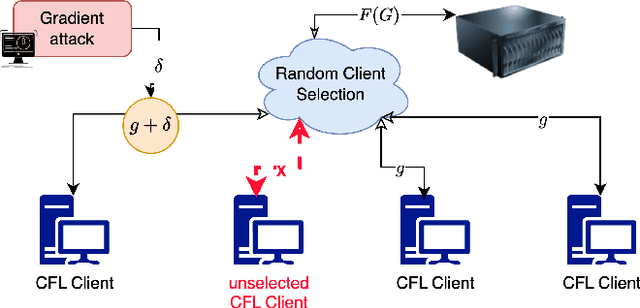
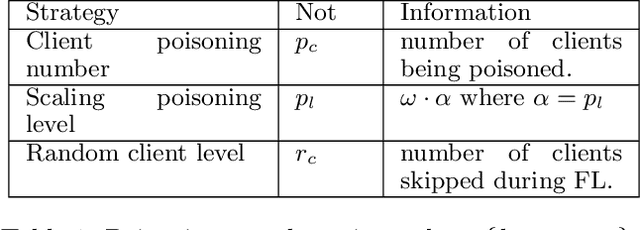
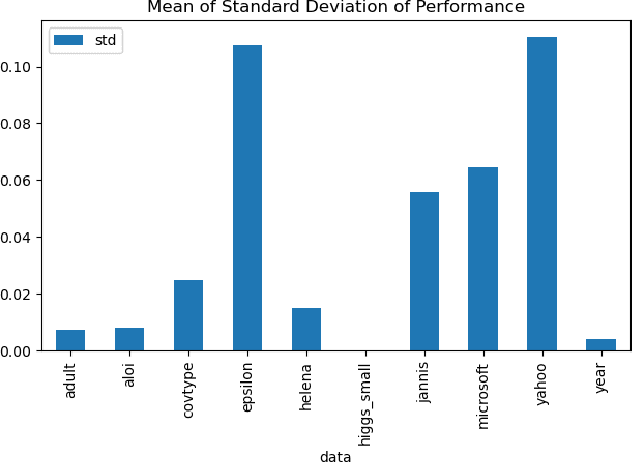
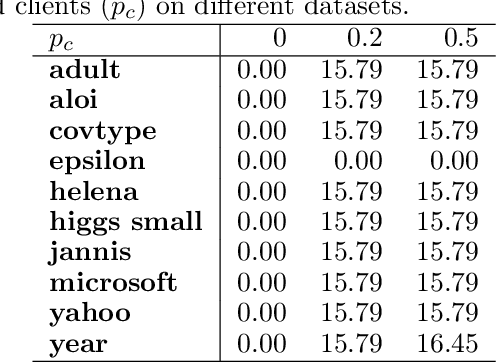
Abstract:Vertical Federated Learning (VFL) has revolutionised collaborative machine learning by enabling privacy-preserving model training across multiple parties. However, it remains vulnerable to information leakage during intermediate computation sharing. While Contrastive Federated Learning (CFL) was introduced to mitigate these privacy concerns through representation learning, it still faces challenges from gradient-based attacks. This paper presents a comprehensive experimental analysis of gradient-based attacks in CFL environments and evaluates random client selection as a defensive strategy. Through extensive experimentation, we demonstrate that random client selection proves particularly effective in defending against gradient attacks in the CFL network. Our findings provide valuable insights for implementing robust security measures in contrastive federated learning systems, contributing to the development of more secure collaborative learning frameworks
Proceedings of 1st Workshop on Advancing Artificial Intelligence through Theory of Mind
Apr 28, 2025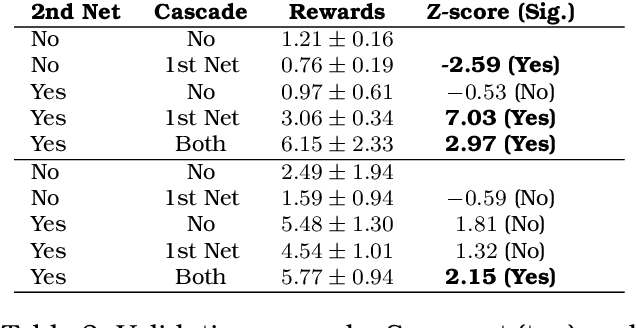


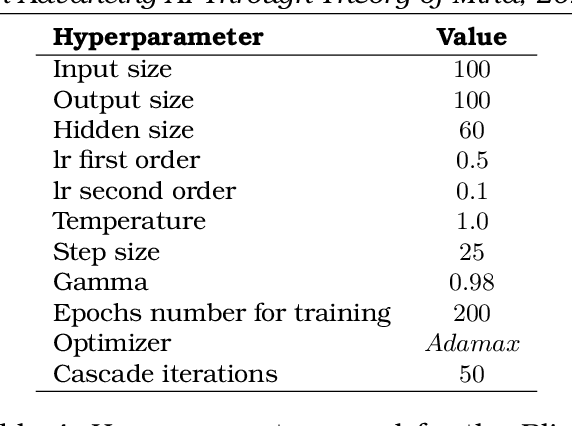
Abstract:This volume includes a selection of papers presented at the Workshop on Advancing Artificial Intelligence through Theory of Mind held at AAAI 2025 in Philadelphia US on 3rd March 2025. The purpose of this volume is to provide an open access and curated anthology for the ToM and AI research community.
FashionDPO:Fine-tune Fashion Outfit Generation Model using Direct Preference Optimization
Apr 17, 2025Abstract:Personalized outfit generation aims to construct a set of compatible and personalized fashion items as an outfit. Recently, generative AI models have received widespread attention, as they can generate fashion items for users to complete an incomplete outfit or create a complete outfit. However, they have limitations in terms of lacking diversity and relying on the supervised learning paradigm. Recognizing this gap, we propose a novel framework FashionDPO, which fine-tunes the fashion outfit generation model using direct preference optimization. This framework aims to provide a general fine-tuning approach to fashion generative models, refining a pre-trained fashion outfit generation model using automatically generated feedback, without the need to design a task-specific reward function. To make sure that the feedback is comprehensive and objective, we design a multi-expert feedback generation module which covers three evaluation perspectives, \ie quality, compatibility and personalization. Experiments on two established datasets, \ie iFashion and Polyvore-U, demonstrate the effectiveness of our framework in enhancing the model's ability to align with users' personalized preferences while adhering to fashion compatibility principles. Our code and model checkpoints are available at https://github.com/Yzcreator/FashionDPO.
CDER: Collaborative Evidence Retrieval for Document-level Relation Extraction
Apr 09, 2025Abstract:Document-level Relation Extraction (DocRE) involves identifying relations between entities across multiple sentences in a document. Evidence sentences, crucial for precise entity pair relationships identification, enhance focus on essential text segments, improving DocRE performance. However, existing evidence retrieval systems often overlook the collaborative nature among semantically similar entity pairs in the same document, hindering the effectiveness of the evidence retrieval task. To address this, we propose a novel evidence retrieval framework, namely CDER. CDER employs an attentional graph-based architecture to capture collaborative patterns and incorporates a dynamic sub-structure for additional robustness in evidence retrieval. Experimental results on the benchmark DocRE dataset show that CDER not only excels in the evidence retrieval task but also enhances overall performance of existing DocRE system.
 Add to Chrome
Add to Chrome Add to Firefox
Add to Firefox Add to Edge
Add to Edge